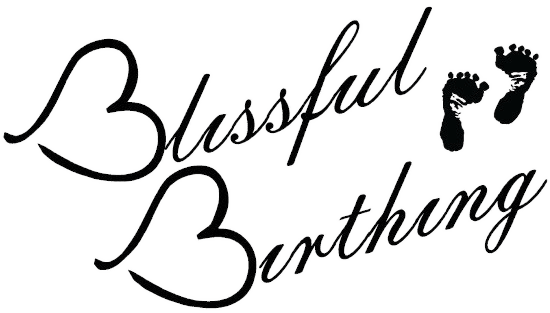 If you’ve read my posts, joined my Facebook group, or spoken to me in person, you know that I am constantly reassuring new moms that just because breastfeeding is natural doesn’t mean it comes easy to every mom and baby. There are, however, steps that you can take once your baby arrives, to help establish a successful breastfeeding relationship early on. As always, not every tip will work for every mother/baby dyad. If you find something that works for you, stick to it!
If you’ve read my posts, joined my Facebook group, or spoken to me in person, you know that I am constantly reassuring new moms that just because breastfeeding is natural doesn’t mean it comes easy to every mom and baby. There are, however, steps that you can take once your baby arrives, to help establish a successful breastfeeding relationship early on. As always, not every tip will work for every mother/baby dyad. If you find something that works for you, stick to it!
Tips for Breastfeeding Success
- Get Comfortable. It is not uncommon for babies to be at the breast nursing for longer periods of time when they are young. They’re learning how to nurse, and they’re also working on strengthening their oral muscles. You’ll want to make sure you’re in a comfortable position when you’re breastfeeding because you may be there for awhile.
- Watch Your Baby, NOT the Clock. If you speak with older mothers you may hear you need to nurse for 20 minutes on each breast at each feeding. This is false. When your baby is full, you will notice her hands relax (they will no longer be in fists). You may also notice that your baby either stops sucking, or sucks many times (5-6 times) before swallowing. This is non-nutritive (“comfort”) nursing. Once you notice this, you can unlatch your baby.
- Nurse On Demand. The BEST way to regulate your milk supply is to bring your baby to your breast frequently. Breastfeeding works on the principle of demand and supply – the more your baby nurses, the more milk your body will make. Nursing every 1.5-2 hours in the beginning is not uncommon – your baby’s stomach is small and cannot hold large quantities of milk. Frequent nursing helps to establish your milk supply.
- Do NOT Stretch Out Feedings. This goes hand-in-hand with the last tip, but it is so important that I want to highlight it. Personally, I do not have an issue with giving a breastfed baby a pacifier so long as it is not used to stretch out the time between feedings (as that can have a detrimental effect on your milk supply). After your baby has fed and is at the point where they are comfort nursing, you can use a pacifier to help them settle down. A pacifier can also be helpful for calming baby before attempting to get a good latch.
- Eat and Drink. We recommend our clients to fill a basket with high-protein snacks and keep it close to where you typically nurse. While your baby is eating, take a moment to have a snack yourself. Staying hydrated is essential to milk production. When you’re getting ready to breastfeed, fill a water bottle and bring it with you; it is easy to forget to drink enough. Making a point to eat and drink when you’re feeding your baby will ensure that you’re keeping your energy up and taking care of your needs, too.
- Don’t Pump. It is important that you nurse as often as possible for the first 2 weeks, pumping only to relieve engorgement. This helps establish and regulate your milk supply. Your baby is much more efficient at emptying your breast than any pump, not to mention that breastfeeding allows your baby’s saliva to communicate with your body through your areola, so you can produce milk that is perfectly tailored to her needs (if her body is fighting off a “bug” your body will get this information through nursing and will produce antibodies to attack the antigens she’s encountered). We do recommend the Haakaa for passive milk collection, especially if you notice you are leaking from the side baby is not latched on. It collects milk that would otherwise be wasted into a nursing pad. It is a great way to start to build a milk stash with minimal effort and without the risk of artificially increasing your milk supply by pumping.
- Ask for Help. It is a good idea prenatally to get the name and contact information for a lactation counselor and store it in your phone. Don’t hesitate to reach out if you’re struggling with breastfeeding; the earlier you ask for help, the more likely you are to overcome the obstacle before it becomes a problem or causes a decrease in your milk supply.
- Listen to What Others Say, but Do Not Do Everything. Your well-meaning friends and family members will likely offer their advice, whether you’re struggling or not. You will quickly notice that what one person says may contradict another. Listen to what they have to say, but don’t feel like you have to take all their advice. It is fine to ask friends and family for their opinion, but their suggestions do not replace professional lactation support. If you’re unsure about something that’s been suggested to you, reach out to a breastfeeding professional for clarification.
- Introduce a Bottle Early, Especially if You’re Going Back to Work. There are few things more stressful for a parent returning to work than a baby who will not eat. If you know you will not be staying home with your baby indefinitely, introduce the bottle early (around 2-3 weeks). This can be giving your baby 1-2oz of expressed milk every other day just so they become comfortable with the bottle.
- How can you give a bottle of expressed milk at 2-3 weeks if you shouldn’t pump until later? Three words: Passive Milk Collection. The haakaa pump can be your best friend. I’ve had clients who were able to collect 3 ounces a feeding with no effort using the haakaa pump. More information on passive milk collection can be found at the end of this post.
- Nipple Confusion Is Not Real. What?! That’s right, there is no such thing as nipple “confusion.” Your baby knows if it is your breast or a bottle in their mouth. Some babies develop a preference for the faster flow of milk from a bottle. Why? Well, it’s less work to get milk from a bottle than from the breast. So what can you do to avoid this flow preference?
- Use a preemie nipple so your baby has to work a bit to get the milk.
- Hold the bottle somewhat perpendicular to the ground, but at enough of an angle that there is milk in the nipple (you don’t want your baby to take in air).
- This prevents gravity from pushing the milk into baby’s mouth, making them have to work for it.
Remember: The sucking pattern at the breast is completely different than that with a bottle. If you are introducing the bottle after 6 weeks of age it may take your baby some time to learn how to get milk from the bottle.
Additional Readings
5 Ways for Non-Breastfeeding Family Members to Bond with Your Baby


Comments 1
Pingback: Oh, Baby! Take Your Shirt Off! | Skin-to-Skin with Your Baby